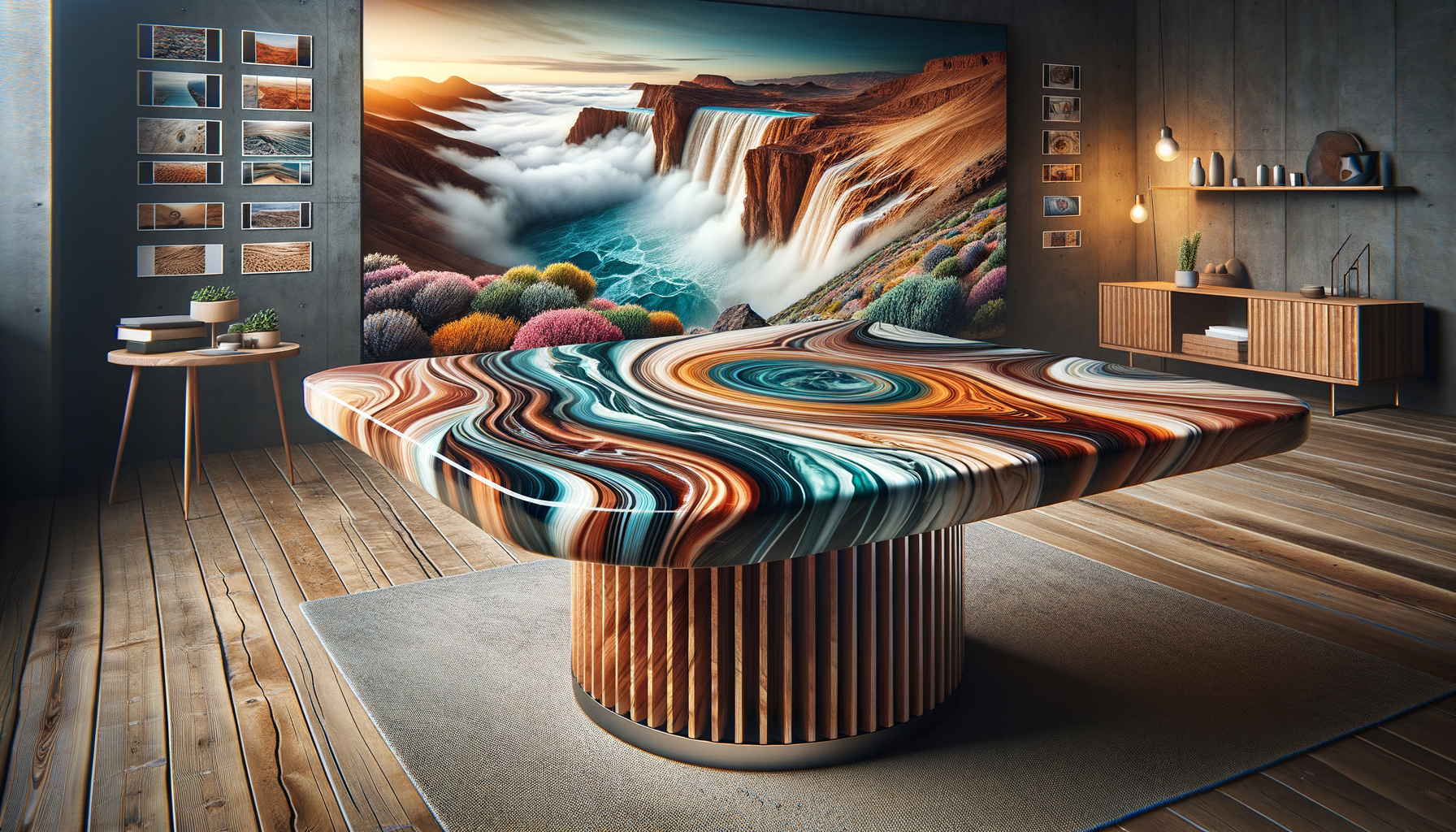Introduction to Epoxy Tables
Epoxy tables have emerged as a popular choice for those looking to merge practicality with aesthetic appeal. These tables are crafted using epoxy resin, a versatile material that can be combined with wood to create stunning, durable surfaces. The allure of epoxy tables lies in their ability to transform ordinary wooden slabs into extraordinary pieces of art. By understanding the intricacies of epoxy tables, from their construction to their design potential, homeowners and designers can make informed decisions that enhance their living spaces.
The Craftsmanship Behind Epoxy Tables
Crafting an epoxy table is both an art and a science. The process begins with selecting a suitable wooden slab, often chosen for its unique grain patterns and natural imperfections. These characteristics are what make each epoxy table one-of-a-kind. The wood is then meticulously prepared to ensure it is free of moisture and debris, which could compromise the resin’s adhesion. Once the wood is ready, epoxy resin is mixed and poured into molds or directly onto the wood. This stage requires precision and patience, as the resin must be carefully manipulated to achieve the desired effect.
After the resin is poured, it undergoes a curing process, which can take several days. During this time, the resin hardens to form a glossy, glass-like finish. The result is a seamless blend of wood and resin, with the latter often used to fill cracks or create striking river-like designs. The craftsmanship involved in making an epoxy table ensures that each piece is not only functional but also a testament to the artisan’s skill.
Design Possibilities with Epoxy Tables
The design possibilities with epoxy tables are virtually limitless. The resin can be tinted with various colors, allowing for customization that aligns with any decor theme. Whether it’s a subtle tint to enhance the natural wood tones or bold, vibrant colors for a more dramatic effect, epoxy resin offers flexibility in design. Additionally, elements such as stones, shells, or metallic flakes can be embedded into the resin, adding texture and visual interest.
Epoxy tables can be tailored to suit different settings, from rustic farmhouse kitchens to sleek, modern living rooms. The versatility of epoxy resin means that it can be used to create everything from coffee tables and dining tables to bar tops and countertops. This adaptability makes epoxy tables a favored choice for interior designers and homeowners alike, as they can be customized to meet specific aesthetic and functional needs.
Maintaining and Caring for Epoxy Tables
Proper maintenance is crucial to ensure the longevity and beauty of an epoxy table. While the resin provides a durable and waterproof surface, it is still essential to care for it correctly. Regular cleaning with a soft cloth and mild detergent will help maintain the table’s shine and prevent scratches. It’s also advisable to use coasters and placemats to protect the surface from heat and moisture.
Avoiding harsh chemicals and abrasive cleaners is key, as these can damage the resin finish. For minor scratches or dull spots, a gentle buffing with a soft cloth and a non-abrasive polish can restore the table’s luster. With the right care, an epoxy table can remain a centerpiece in any room for years to come, combining functionality with enduring beauty.
The Environmental Impact of Epoxy Tables
As with any product, it’s important to consider the environmental impact of epoxy tables. While epoxy resin is a synthetic material, many manufacturers are taking steps to reduce their environmental footprint. This includes using eco-friendly resins that emit fewer volatile organic compounds (VOCs) and sourcing wood from sustainable forests.
Consumers can also play a role by choosing epoxy tables made from reclaimed wood, which not only adds character to the piece but also supports sustainability efforts. By making conscious choices, both manufacturers and consumers can contribute to a more sustainable future, ensuring that the beauty of epoxy tables does not come at the expense of the environment.




Leave a Reply